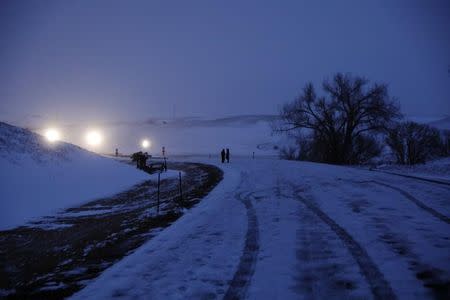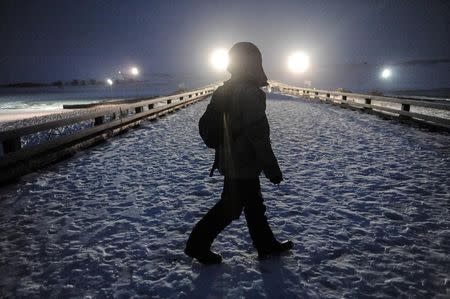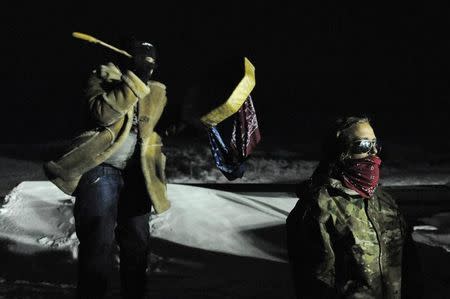As winter nears, Dakota Access faces frigid weather and costly delays
By Liz Hampton and Ernest Scheyder HOUSTON (Reuters) - Delays to the Dakota Access Pipeline have added millions of dollars to Energy Transfer Partners' construction tab - but even if the line is approved, the freezing temperatures will bring their own challenges to finishing the drilling process. Frigid weather makes some aspects of pipeline construction more difficult, though not impossible, engineers and experts interviewed by Reuters said this week. While the majority of the construction on the 1,100-mile (1,770 km) line is complete, work on a one-mile segment in North Dakota was halted in September following protests from the Standing Rock Sioux tribe and others, who said it could desecrate sacred lands and contaminate drinking water. That stretch would be expected to take 90 to 120 days to finish, ETP has said. Construction equipment used to bore under rivers can break through any layer of frost, said Eric Hansen, the director of environmental services at Westwood Professional Services, a surveying and engineering firm in the U.S. upper Midwest. At issue, however, is the fluid construction companies use to lubricate the drill head. That drilling fluid, which circulates to clear out debris and keep parts lubricated, freezes at air temperatures between 10 and 20 degrees Fahrenheit (-12 to -7 Celsius). To avoid this, pipeline crews will keep equipment running nonstop, which allows them to avoid warming up equipment that's been turned off in cold weather, said an engineer who has done work in North Dakota but declined to be named. The median temperature in Morton County, North Dakota, near the pipeline route is 13 degrees F between December and February, according to the National Weather Service. The NWS is forecasting a 60 percent chance that temperatures will be lower than that median for the next three months. Hansen added that the high winds in North Dakota and heavy snow accumulation can also slow operations. The temperature in Cannon Ball, North Dakota was 30 degrees F on Thursday. As the U.S. government weighs whether to grant Energy Transfer the easement, the pipeline operator said in a legal filing in late November that delays following the projected Jan. 1 start-up would cost about $84 million a month. Energy Transfer Partners this week said it still expected to complete the pipeline in the first quarter of next year, even after the U.S. government in November further delayed a decision on whether to grant the company an easement needed to drill under Lake Oahe, a reservoir that is part of the Missouri River. Even if boring started at the beginning of 2017, the 90 to 120-day time frame for completion could mean additional costs of between $252 million and $336 million. The company has moved equipment to begin drilling under Lake Oahe as soon as it receives the easement. The pipeline was originally slated to begin transporting oil out of the Bakken shale to the U.S. Midwest by the end of this year. The segment of the Dakota Access that needs completion will burrow under the ground before Lake Oahe, and then cut about 100 feet below the bottom of the river, according to environmental assessment documents from the Army Corps of Engineers and Dakota Access company. Pipeline companies accustomed to working in freezing temperatures have ways to combat the elements, such as using heated shacks at the site to protect welders, said John Stoody, vice president of government and public relations at the Association of Oil Pipelines, an industry group. Capital-intensive pipeline projects are underpinned by firm commitments from shippers, meaning an exodus of shippers due to delays could erode the economic viability of the line. "Loss of shippers to the project could effectively result in project cancellation," the company said in a court filing. Energy Transfer cannot access the remaining $1.4 billion of its credit facility without all necessary approvals for the line, the company said on its quarterly earnings call. (Reporting by Liz Hampton and Ernest Scheyder; Editing by Phil Berlowitz)

 Yahoo Finance
Yahoo Finance 









